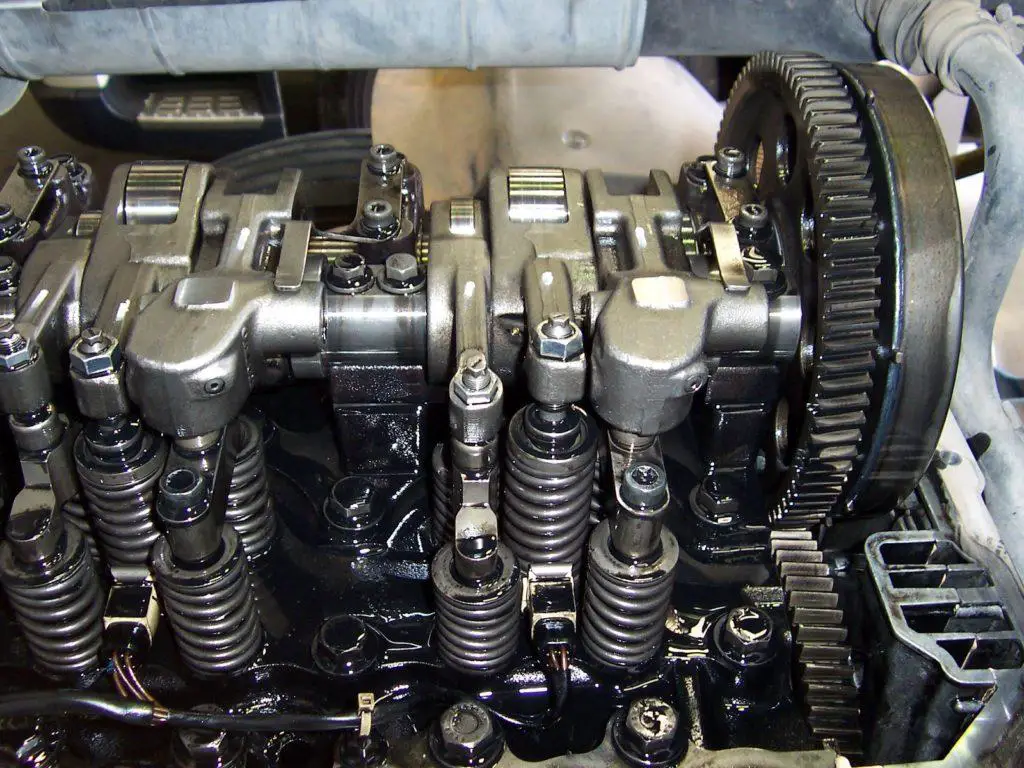A Jake Brake, or a Jacobs Engine Brake, is an engine braking mechanism that slows down your vehicle without wearing down your service brakes. If you’ve heard a semi-truck producing a loud screeching sound while coming to a halt, you’ve heard the Jake Brake mechanism in action.
If you are curious about what are Jake Brakes and want to make an informed decision before investing in them, continue reading. This article will give you an intrinsic understanding of engine brakes and their basic function in car processes.
Jump To
History of Jake Brakes
Jake Brakes were invented ninety years ago when the founder of U.S. diesel engines was on the verge of losing his life due to failing brakes. It all started when the founding father, Clessie Cummins, hopped in a diesel truck with two companions and commenced an incredulous journey across America.
While testing the endurance of diesel engines, Cummins saw his life flash before his eyes when he saw a train roaring across the road in the periphery. As the truck crossed the tracks, he kept that near-death experience close to his heart and inspired the creation of a flawless engine brake mechanism that created a sensational uproar in the decades to come.

https://commons.wikimedia.org/wiki/File:Jake_Brake.jpg
How Does a Jake Brake Work?
A Jake Brake is predominantly a compression-release engine brake that helps large trucks descend steep surfaces at a controlled speed. The company that commercialized the engine brake system was known as Jacobs Vehicle Systems, which turned the engine into an air compressor and allowed seamless maneuvering.
As the name suggests, the compression release brake opens up the exhaustion valves to release the compression air in the cylinders. During the operation of a large rig, the air was forced into the engine cylinders to check whether it would get compressed and converted into energy.
After this, the pistons took over and distributed the energy to the vehicle to produce sufficient power for the semi-truck. However, when the Jake Brake was activated, the air was pushed out from the exhaust valves, eventually slowing down the vehicle. This action is similar to removing your foot from the gas so that gravity eventually stops your car.
The diesel compression release brake comprises an on/off switch and a multi-position switching function so that the driver can control the number of active cylinders on which the brakes are running.
It is the driver’s job to ascertain the transmission gear depending on the truck’s load and the downhill steepness. When used properly, Jake Brakes extend the life service of your brakes and reduce wear and tear.
Jake Brake Vs. Exhaust Brake
While both may sound similar in theory, Jake Brakes and exhaust brakes are entirely different. While Jake Brakes release the compressed air from the wheel cylinders, exhaust rakes trap the air within the engine system, which forces the vehicle to slow down.
The main difference between the two brake systems is how they operate. For engine brakes, the path of the exhaust is blocked, which increases the pressure in the exhaust system and slows down the engine manifold. This increased pressure prevents the wheels from moving the pistons and slows down the car.
On the other hand, Jake Brakes release compressed air from the engine exhaust valves, which slows down the car due to combustion. Jake Brakes slow down the vehicle by reducing the power supply to the wheels.
Based on performance alone, a Jake Brake is much more powerful than an exhaust brake. It can exert braking power that is more than the rated power output of the engine itself.
When Should You Not Use a Jake Brake?
Jake Brakes are not designed for ice or slippery surfaces. In normal conditions, a Jake brake performs exceptionally well and allows the engine to slow down. Drivers should avoid using them in slippery areas as it increases the chances of skidding.
If an emergency situation arises where the driver must slow down on a slippery road, the vehicle must be lined up before so that the truck does not skid across the moist surface. You should be aware of “No Jake Brake” or “Jake Brakes Prohibited” signs to avoid penalties. We’ll discuss this in detail below.

https://commons.wikimedia.org/wiki/File:Unit_injector.jpg
The Ban on Jake Brakes
Although Jake brakes do not cause any harm to the engine of the car itself, it does produce an overbearing sound when it forces the car to a halt. You must have come across “No Engine Braking Signs” that prevent you from creating a ruckus in some designated areas.
For several communities, the Jake Brake noise can be too disruptive. The mechanism of compressed air being pushed out from the exhaust produces a loud noise which can damage the foundations of houses and other structures near the roadway. Several states have passed laws to prohibit the use of Jake Brakes completely, according to the Office of Legislative Research.
Moreover, you can face a penalty of up to $500 or up to three months if you fail to comply with the residential laws of the area. There are exceptions to this rule if the driver needs to use the Jake Brakes in an emergency.
Conclusion about what are Jake Brakes
Jake Brakes are versatile braking mechanisms that have made it easy for truck drivers to navigate steep areas without risking accidents. Make sure you abide by the rules and refrain from using Jake brakes near residential areas unless it is a compulsion.
